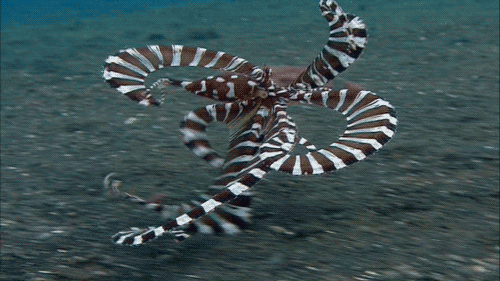Bipedal locomotion has been thought to require the opposition of muscle against a rigid skeleton. Instead, transverse, longitudinal, and oblique bands of muscle in the arms allow octopuses exceptional flexibility, while their internal volume remains constant and provides support. Bends propagate down single arms from base to tip in a relatively stereotyped wavelike fashion that appears to underlie bipedal locomotion in these animals. This motion has been elicited in severed arms, without direct control from the brain.
Crypsis is the primary defense of most octopuses, yet camouflage requires cephalopods to remain still or move only very slowly. When an octopus moves quickly, it becomes visually conspicuous and must employ unique behaviors to evade its predators search image. By walking, both O. marginatus and O. aculeatus are able to move quickly while using six of their arms to remain disguised: O. marginatus perhaps as a rolling coconut and O. aculeatus as a clump of algae tiptoeing away.

Information Source: https://science.sciencemag.org/content/307/5717/1927

